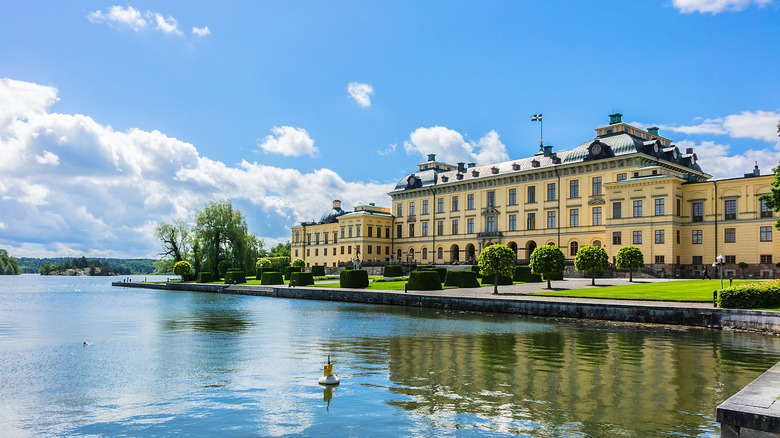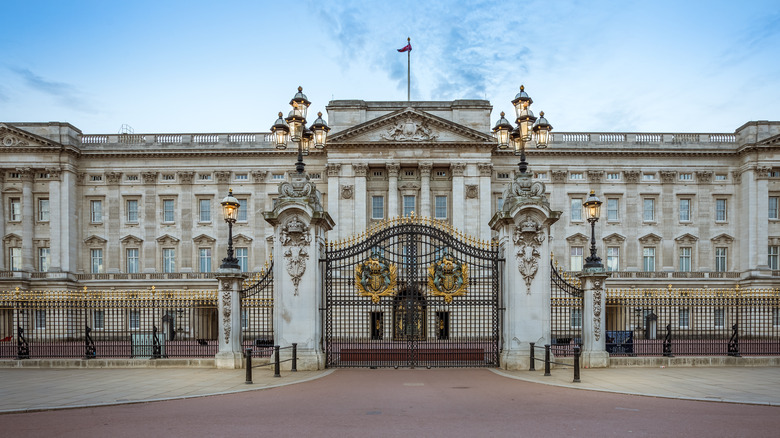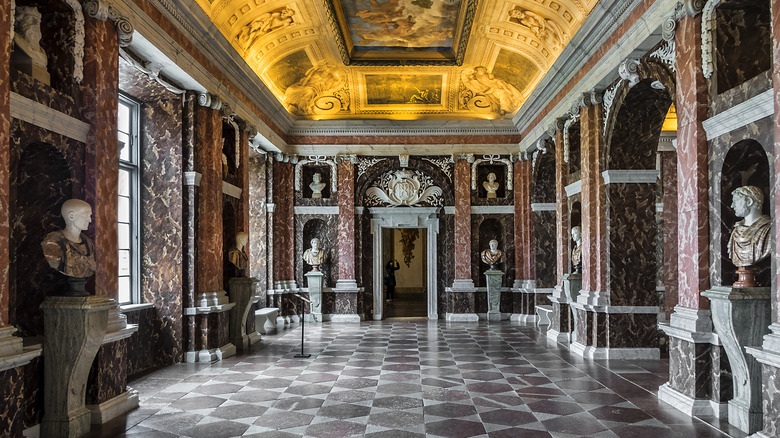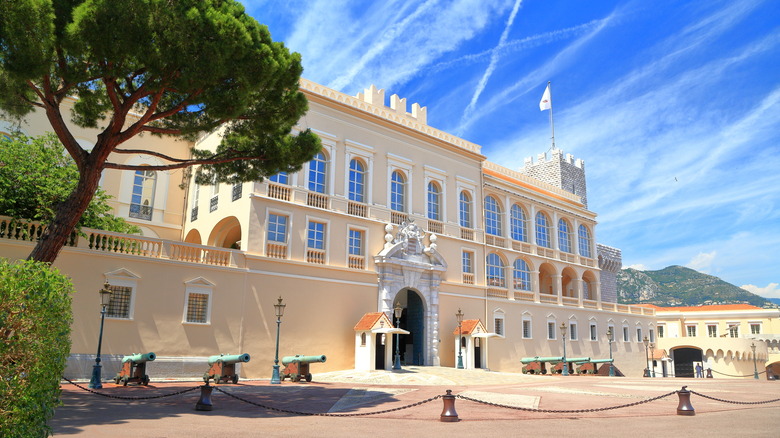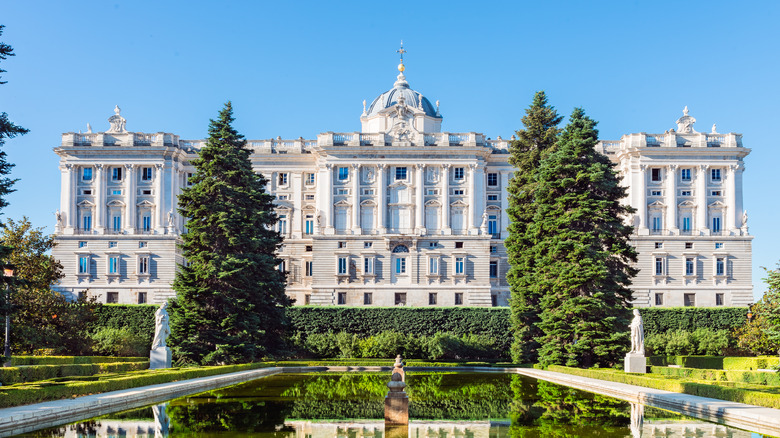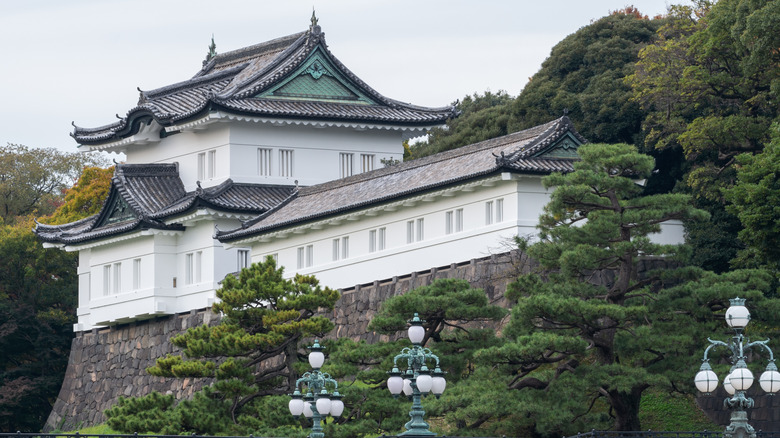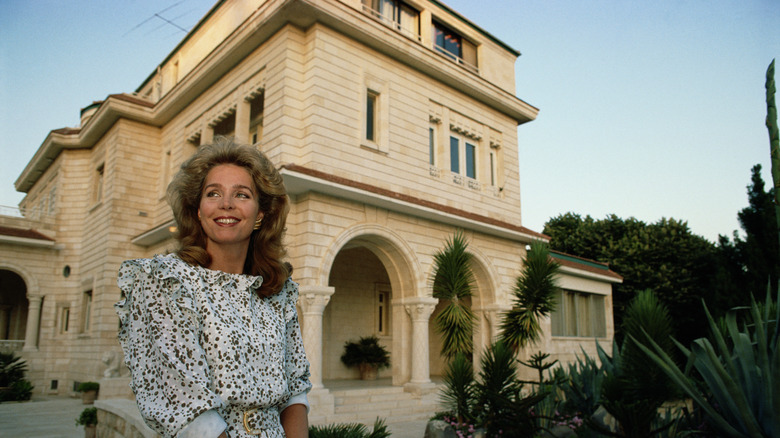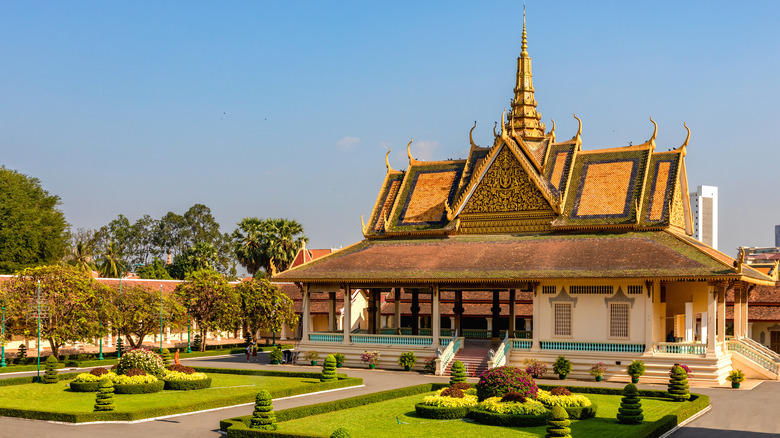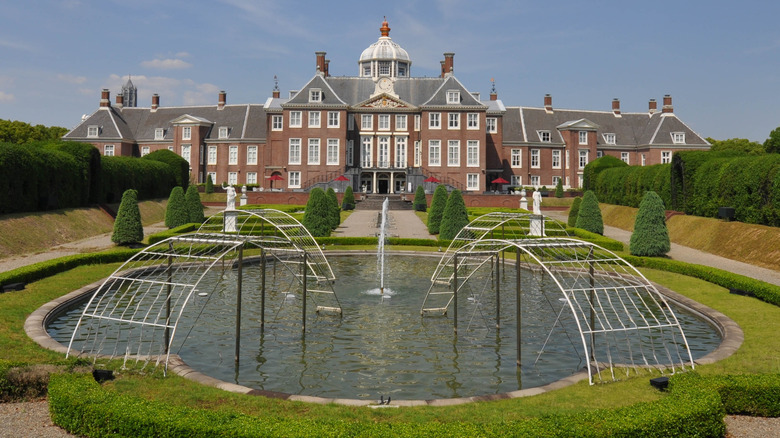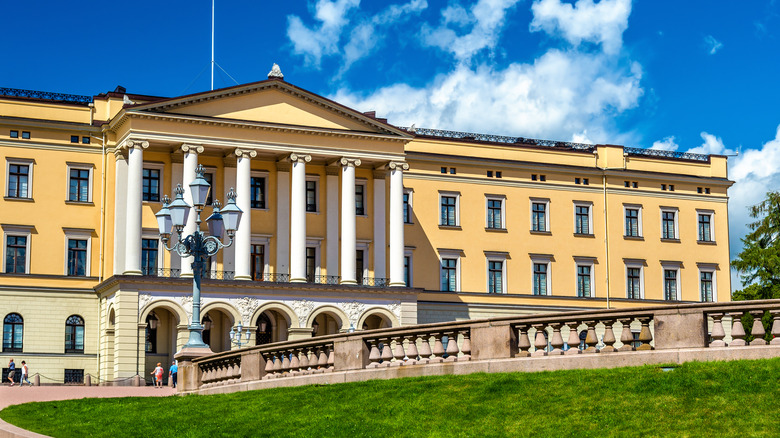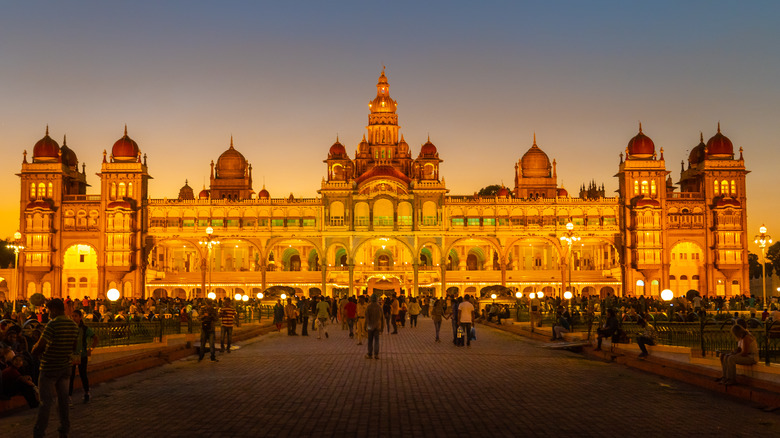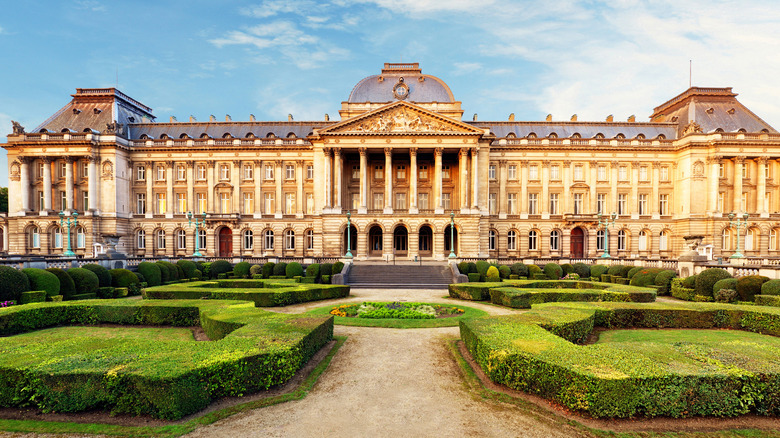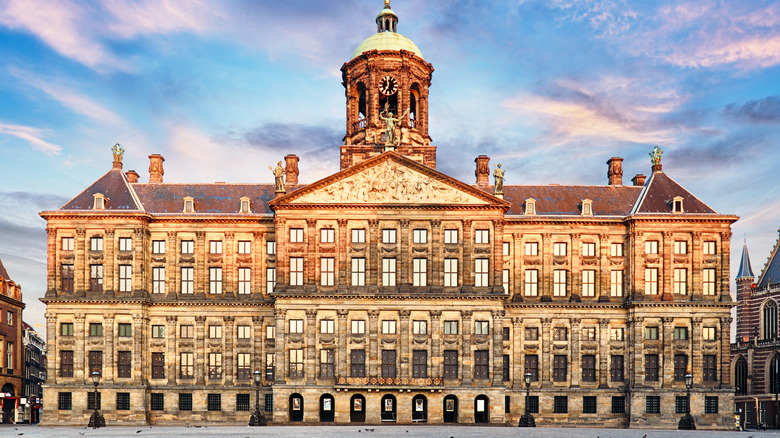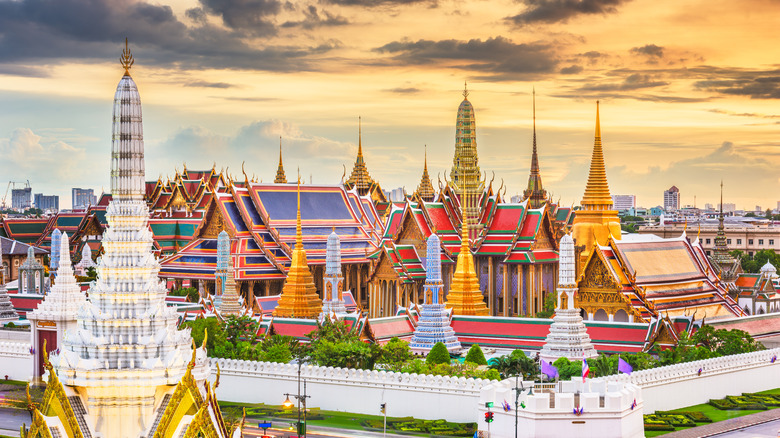The Most Beautiful Royal Residences Around The World
A stunning palace is on the wish list for any city. However, like all beautiful things, there's a hefty price tag attached to it. For many palaces across the world, it takes big bucks to keep a castle in business. That includes Buckingham Palace in London, England, which, according to People, recently underwent a $460 million renovation. Unfortunately, that was only one of the palace bills that taxpayers had to pay to keep the royal family living comfortably. A bill for $60 million was racked up following a catastrophic fire at Windsor Castle about 30 years ago, and Prince William and Princess Kate's then-new home at Kensington Palace was renovated prior to their arrival for more than $7 million.
Although most of us are familiar with Buckingham Palace (even if we're not familiar with its colossal costs), there are tons of other royal palaces throughout the world that each country's respective royal family calls home. They're all different in that they reflect that country's architectural style and history, but one thing is the same — they're all pretty impressive.
Buckingham Palace, the opulent home of Queen Elizabeth in London, England
If you've been to the United Kingdom, you've likely made a stop at Buckingham Palace in the heart of London to take a typical tourist photo. However, this colossal 830,000 square foot home with a 390-acre garden is much more than a tourist attraction, according to Town & Country. It's home to the British royal family, and it's commonly used to host royal events. This includes Queen Victoria's first appearance as a royal in 1837, as well as Prince William and the Duchess of Cambridge's wedding photos.
Per The Royal Collection Trust, Buckingham Palace is open to visitors from July to October each year, and while there, tourists can explore 19 of its rooms. Those include the opulent white drawing room, which the Royal Family uses to congregate before official events; the red-lined Throne Room used for coronation ceremonies; and the Music Room, where guests gather prior to a royal meal. However, there are more than just State Rooms to see here. Visitors can also explore The Queen's Gallery, which features works by prominent painters as well as priceless jewels. Outside, they can get a bit of fresh air in the royal garden, which includes a tennis area, a rose garden with more than two dozen types of roses, and a lake as large as three football fields.
Drottningholm Royal Palace, a mix of Asia and Europe in Stockholm, Sweden
The real Palace of Versailles in Paris, France, may not exactly be a close neighbor of Stockholm, Sweden, but it might as well be with Drottningholm Royal Palace. The Palace of Versailles inspired this grand home, but with its location on an island in Lake Mälar, a perfectly preserved theater dating back 250 years, and lush green gardens, it stands in a league all its own, according to World Heritage.
The Swedish royal family is lucky enough to call this amazing estate home. Tourists can visit it throughout the year and, for a real steal, they can also stroll through the always-free gardens. These gardens include grand fountains, seemingly endless rows of trees, and even a Chinese pavilion. It's a perfect example of how Drottningholm Royal Palace isn't just a representation of Swedish or even European life. Instead, the palace showcases how both Europe and Asia worked together during this time to create stunning structures and décor. What's even more amazing, though, is that all of these elements are the same as when the palace was built during the 17th and 18th centuries, per UNESCO. It's been meticulously cared for, so the original building materials, gardens, and pieces of grand décor are exactly as they were so many years ago.
The Prince's Palace, a lavish and lucky steal in Monaco
Monaco, a city-state on the French Riviera, may be small at not even one square mile, but what it lacks in space it makes up for in grandeur. It's home to some of the most luxurious resorts and richest people in the world. It's a vibe that extends to the Prince's Palace in Monaco, where the Grimaldi family resides. Tourists can visit during a few months out of the year to see how the royals live, but members of the Grimaldi family aren't the only ones fortunate enough to call this former fortress home. Per French Riviera Travel, American actress Grace Kelly lived here, too, after marrying Prince Rainier III.
It all started in the 13th century when the former fortress was built. It was captured and converted by the end of the century by the Grimaldi family, who pretended to be monks looking for a respite from the elements before breaking in and ending the 700-year reign of the previous ruling family. Throughout the centuries, the Prince's Palace became the lavish home it is today, adorned with priceless paintings, sculptures, and more. It now features other royal-worthy touches, said Monaco Now, like a grand staircase made entirely from Carrara marble, and murals throughout the palace chapel and onsite gallery.
The Royal Palace of Madrid, an estate of surprises in Madrid, Spain
It might have the typical name of a royal palace, but the Royal Palace of Madrid (otherwise known as Palacio Real in Spanish) is a structure of contradictions. Per Madrid Tourism, the Spanish royal family doesn't ever call it a night at the Royal Palace, but the castle is still used for official events while the family lives in another palace near the city. It's also not the original royal palace that once sat on this one's footprint in the ninth century. That castle, typical of Spain and Portugal during that time period, burned to the ground in the mid-1700s. In its place, King Felipe V built a new palace –- and, like Drottningholm Royal Palace, it was inspired by the Palace of Versailles. But this time, he wanted to ensure another fire wouldn't take it down. So, the new Royal Palace was made of stone and brick, and just a few years after it was built, Carlos III moved in.
But the Royal Palace is far more than stone and brick. Known to be one of the most beautiful palaces on the continent, the Royal Palace is adorned with stunning murals painted by some of the most well-known artists of the time. It also boasts elegant mahogany doors and windows, as well as Spanish marble, which gives the structure its lavish ambiance.
Tokyo Imperial Palace, the hidden-away home of the emperor in Tokyo, Japan
Tokyo is a city of towering skyscrapers, fluorescent lights, booming music, and cutting-edge technology. But a lush, tranquil paradise is also only minutes away. This paradise is Tokyo Imperial Palace, where the Emperor of Japan lives surrounded by the biggest green space in the city, per JapanVisitor. Although the Imperial Palace itself is essentially off-limits to visitors as it's only open two days per year, the surrounding Kokyogaien National Gardens effectively functions as a public park. It has walking and running paths, colorful gardens, dozen moats, famous cherry blossoms, historic bridges, towering fountains, and an array of wildlife.
The palace itself is known as Edo Castle, or Kyujo. Despite its grand exterior, it's only been the emperor's home for about 150 years, which started when the Royal Family moved to Tokyo from Kyoto, a city about six hours away. Visitors can see the royal family and their home (although from afar) on just those two open days per year, which are the emperor's birthday on Dec. 23 and New Year's Day on Jan. 2. But if you decide to make the trek, keep in mind that the crowd will be colossal, and the wait will be long (via Tokyo Convention & Visitors Bureau).
Raghadan Palace, part-time home of the royal family in Amman, Jordan
Like some other royal palaces, Raghadan Palace isn't the constant home of King Abdullah II and his wife, Queen Rania. Instead, the royal family splits their time between Raghadan Palace and their less-ostentatious home that's also in the city of Amman, per Daily Express. However, whether they're there or not, Raghadan Palace is one of the most important buildings in the country. It's where official business, such as traditional ceremonies or dignitary meetings, occurs. It's been that way ever since it was built in 1926. It was themed after other significant Islamic buildings in the country, with its stained glass windows and intricate woodwork.
However, the palace is not the same as a century ago. Raghadan Palace, which translates to the palace of "a decent life," was severely damaged by a freak fire about 50 years ago. The roof, flooring, and some rooms were destroyed, but were quickly restored to their former glory. Preservationists took special care to ensure that some spaces, including the important Throne Hall, looked just as before. The building also includes a central courtyard adorned by two foreboding and historic cannons; an elaborately-decorated lobby area; a reception hall with space for praying; a meeting hall used for gatherings with politicians; and the former quarters of the late Sharif Hussein bin Ali (via The Royal Hashemite Court).
The Royal Palace, a golden city respite in Phnom Penh, Cambodia
With its high yellow walls, sparkling gold roof, green lawns, and grand white towers, you can't miss the Royal Palace in Phnom Penh, Cambodia. To no surprise, it's also one of the city's most beloved destinations, especially for visitors, according to Culture Trip. A visit here can also be as involved as a tourist wants. One of the lawns near the Moonlight Pavilion is frequently filled with passersby, simply enjoying a respite from the busy city beyond. Or, visitors can head to the public gardens, bursting with flora from all over the world, or check out several other spaces such as the Throne Hall or Silver Pagoda, which are both filled with important relics from Cambodia's past. Since the royal family lives here and official functions are hosted here, several spaces are permanently off-limits to visitors.
Because the Royal Palace is marked with golden Buddhas (there's even one adorned with more than 2,000 diamonds), historical artwork, and religious temples, utmost respect is required of all visitors. Shoulders and knees must be covered at all times, and conservative clothing is necessary for entry. Visitors cannot take photos while inside the Silver Pagoda or touch any of the items on display there — no matter how beautiful they may be.
Huis ten Bosch Palace, a forest hideaway in The Hague, Netherlands
Although Huis ten Bosch Palace started simply as a vacation home for Amalia van Solms nearly 400 years ago, it's now much more than its namesake, which means "house in the woods." It's the home of the Dutch royal family, tucked away in the Haagse Bos forest, per The Hague. However, with its somewhat dark history, it makes sense that the palace was demoted to a part-time residence for hundreds of years. When Amalia van Solms' husband died during the palace's construction, she wanted it simply used to honor his life rather than used as a functional structure. That changed in the 1980s, and the royal family moved back to this Italian-style building.
Like many other royal residences, Huis ten Bosch Palace now serves as a royal home, a place for official business, as well as an escape from the busy city for the public. It takes up nearly half a mile of lush greenery and forestry, where visitors can run, walk, or picnic just a short walk from the Hague. Unfortunately, a view of the palace is all visitors can hope for. Since the royal family lives here, there are no tours of the palace's interior. But from beyond the wrought iron gates, you can still see the castle's gold cupola, white brick façade, and stately exterior.
The Royal Palace, a living piece of history in Oslo, Norway
The neoclassical-style Royal Palace does not look exactly as it did when it was built in 1824. As each new monarch took their reign, some of the architecture and décor it had before changed. But it still maintains the same air of elegance as it did 200 years ago. When it was built, it was meant to be the home of King Carl Johan, but unfortunately, he didn't live to see the last brick laid. These days, it's used for official royal business, according to The Royal House of Norway. Here, the king and queen live and work, stately meals are held for visitors, the Royal Court accomplishes its daily tasks, and other heads of state stay the night.
Although tours are currently not in operation due to COVID-19, visitors can usually hop on a 20-minute guided tour during the summertime, which is the best season to visit Norway due to its harsh climate. They can see the various state rooms of the palace, such as the ballroom, topped with a jaw-dropping chandelier, and the King Haakon suite, a gold-walled room where kings and presidents have spent the night. There's also a rotating exhibit on tour, which most recently featured ornate dresses once worn by Queen Sonja and Queen Maud.
Mysore Palace, an opulent and ostentatious fortress in Karnataka, India
It may not get the same hype that the Taj Mahal enjoys, but Mysore Palace, one of the biggest palaces in the country, is nothing to balk at. FabHotels notes that what's also known as Amba Vilas Palace is also where the Wodeyar Dynasty lived for a whopping 500 years. Its three stories represent a mix of Hindu, Mughal, Rajput, and Gothic elements, which translate into colored glass ceilings, over-the-top chandeliers from faraway lands, international artwork, towering archways, and sun-filled bay windows. It's no surprise that it took more than a dozen years to build this elegant and grand structure in the southern state of Karnataka. That, however, only came after the former palace in its place burned to the ground in a devastating fire as a result of a thunderstorm.
Although the royal family does call Mysore Palace home, some of it is open to visitors, who can check out the palace's best features. This includes a colossal assortment of Indian dolls, the soaring 'Elephant Gate' which welcomes visitors to the palace, various temples throughout the property, and priceless paintings and photographs. If you're planning a visit, though, make sure you stay into the evening. Almost every single night, a sound and light show enchants both adults and children alike.
The Royal Palace, an elegant political fixture in Brussels, Belgium
Today, visitors will see the century-old Royal Palace in the heart of Brussels, which is adjacent to the Royal Park. However, long before that, the Coudenberg Palace stood here for nearly 800 years, but it was claimed by fire like many other wooden palaces. In its place, the Royal Palace was erected in a neoclassical style by King Leopold II, per Culture Trip. Leopold's new palace was twice the size of the former, and its exterior is longer than Buckingham Palace to convey a sense of grandeur.
However, opportunities to see the Royal Palace of Brussels up-close are slim since its iron gates are only open to the public for a few weeks each summer following the national holiday of July 21 (via The Belgian Monarchy). But if you do make it to the palace during this time, you can see its tranquil white vestibule topped with a grand marble staircase; a historic anti-chamber dotted with important political history; and the empire room, a grand ballroom for special ceremonies. Opportunities to see the royal family are even slimmer. They usually spend their time at the Palace of Laeken, only about 10 minutes away. Instead, the Royal Palace of Brussels is where the monarchy does the day's business and meets with foreign dignitaries.
The Royal Palace, a former town hall turned grand estate in Amsterdam, Netherlands
Unlike some other royal palaces, the Royal Palace of Amsterdam is usually open to tourists. According to its website, every effort is made to accommodate visitors in seeing this grand structure designed during the 17th century. Although that isn't the current case due to COVID-19 — the palace is currently closed to keep both staff and visitors safe from infection — it's known as a friendly palace that serves as King Willem-Alexander's formal reception building. Its history makes it clear why this palace is so welcoming to guests. Long before it was ever used as the site of royal dinners and ceremonies, it was a town hall before King Louis Bonaparte decided it was destined for more refined duties about 200 years ago.
The Royal Palace was built during the "golden age" of the Netherlands. Today, it remains the most beloved and intact structure from that time, which is apparent to both the public and visiting dignitaries alike. From the Royal Palace's stunning Citizen's Hall to the galleries that house works of art from well-known artists throughout history, it's a sight to behold. Yet another beautiful must-see collection here is King Louis Bonaparte's vast assortment of Empire furniture, which other visiting nobles are lucky enough to use when they come to town.
The Grand Palace, a golden paradise in Bangkok, Thailand
Teeming with busy streets and opulent structures, Bangkok has it all. That's obvious with The Grand Palace, which features gold in every possible corner, towering peak, and intricate stonework throughout its 100 buildings, per Culture Trip. However, despite its over-the-top appearance, the royal family hasn't lived here for nearly a century. Instead, the palace is used to attract visitors and, once in a while, to host traditional Thai events. But even though it's no longer a functioning palace, it's still one of the most-visited destinations in the entire country.
If you decide to visit The Grand Palace, you'll find it easy to spend an entire day here due to its colossal size. It's made up of three different zones, which have a mix of architecture inspired by Thai and European styles. But don't miss The Temple of the Emerald Buddha (Wat Phra Kaew), which houses, fittingly, an emerald Buddha. Although you can see the Buddha from afar, only the king can approach it when he visits to change its seasonal cloak three times per year, according to Hotels.com.
